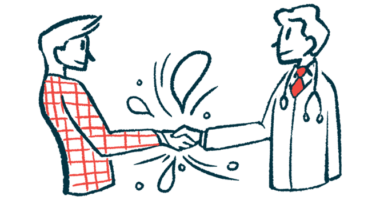New research grants target ALS causes, biomarkers, gene therapy
ALS Network/ALS United program designed to advance scientific discovery

-
ALS Network and ALS United awarded 13 research grants aimed at enhancing ALS understanding and care.
-
Projects focus on biomarkers, genetic causes (C9ORF72, TDP-43), environmental risks, and motor neuron death.
-
Research includes gene therapy, regenerative medicine, and brain-computer interface technologies for ALS treatments.
The ALS Network, in collaboration with ALS United, has announced the winners of the 2025 Research Innovation Grants, which support projects aimed at enhancing understanding and care for amyotrophic lateral sclerosis (ALS).
This year’s group of 13 awarded research projects spans a broad array of high-impact science — ranging from biomarker discovery to gene therapy, and from regenerative medicine to advanced brain-computer interface (BCI) technologies.
“Every research partnership moves us closer to breakthroughs the ALS community urgently needs,” Sheri Strahl, MPH, MBA, president and CEO of the ALS Network, said in an organization press release. “We support revolutionary, transformative science that strengthens our shared path toward effective treatments and, ultimately, cures.”
Research Innovation Grants recipients were chosen through an annual competitive process, with applications carefully reviewed by the ALS Network’s Scientific Advisory Committee and Community Research Committee.
The grant program is a collaborative effort designed to advance scientific discovery and translate innovation into tangible progress for people living with ALS, particularly at a time when federal funding cuts threaten momentum in the field.
The most significant investments were made by ALS Network and ALS Northwest, one of the 12 members of ALS United that contributed to these grants. ALS United is a coalition of independent ALS organizations dedicated to improving patient care, supporting research, and promoting policies that benefit people with ALS.
“ALS Northwest is proud to invest in research that has the potential to transform the future of ALS,” said Cassy Adams, executive director of ALS Northwest. “It reflects our belief that strategic, collaborative funding can accelerate progress. We’re committed to fueling visionary science that leads to real breakthroughs and to standing with those living with ALS as we work toward a cure.”
Some projects explore genetic causes of ALS
ALS is a progressive neurodegenerative disease that affects motor neurons, the specialized nerve cells responsible for controlling voluntary movement. As these nerve cells deteriorate, people gradually lose the ability to walk, speak, eat, and, eventually, breathe.
Although the causes of ALS are not fully understood, genetic mutations are responsible for some cases of the disease.
C9ORF72 gene mutations are the most common genetic cause of ALS, while mutations in the TARDBP gene, which codes for the TDP-43 protein, have been linked to an increased ALS risk. These mutations cause the accumulation of toxic clumps within nerve cells.
One awarded project, led by Sandra Almeida, PhD, at the University of Massachusetts Chan Medical School, will investigate TDP-43 dysfunction in a stem cell-based three-dimensional disease model of ALS caused by C9ORF72 mutations, which is also a major cause of frontotemporal dementia (FTD).
Patrick Murphy, PhD, at the University of Connecticut, will investigate the distinct mechanisms in ALS and FTD that are related to TDP-43 suppression in endothelial cells, which line blood vessels.
Meanwhile, Marc Weisskopf, PhD, at the Harvard T.H. Chan School of Public Health, will analyze military occupation, deployment patterns, and environmental exposures to better understand ALS risk among U.S. veterans.
Other awarded projects will apply cutting-edge molecular tools to reveal why motor neurons die in the first place. Timothy Miller, MD, PhD, at Washington University School of Medicine, plans to map motor neuron vulnerability by analyzing changes in gene activity within the brain. Richard Daneman, PhD, and John Ravits, MD, at the University of California, San Diego, will examine genes, proteins, and cell activity to investigate ALS-related cerebrovascular changes.
Treatment-oriented projects also received funding
Several awarded projects will focus on identifying biomarkers that could improve early diagnosis, track disease progression, and inform treatment decisions.
Stanislav Piletsky, PhD, and Daniel Heller, PhD, at the Memorial Sloan Kettering Cancer Center, are working to develop an artificial intelligence-assisted system designed to identify new ALS biomarkers.
A project led by Frederick Arnold, MD, at Washington University aims to investigate whether a particular form of the tau protein — whose protein clumps are a hallmark of Alzheimer’s disease, but are also present in ALS — can be an ALS biomarker and therapeutic target.
Noah Zaitlen, PhD, Roel Ophoff, PhD, and Martina Wiedau, MD, at the University of California, Los Angeles, will study whether circulating cell-free DNA can be used as a biomarker for ALS diagnosis and progression.
Several treatment-oriented projects also received funding. A project led by Claire Clelland, MD, PhD, at the University of California, San Francisco (UCSF), will screen for miniaturized gene therapy components that could ultimately enable safer and more effective gene therapies to correct C9ORF72 mutations.
Faranak Fattahi, PhD, and Sarah Kishinevsky, PhD, at UCSF and EverTree Bio, will test small molecules designed to protect glial cells — support cells that help keep motor neurons healthy — to assess whether these could be potential ALS therapies.
The goal of a project led by Lyandysha Zholudeva, PhD, at the Gladstone Institutes is to create models of human spinal circuits to test therapies designed to replace or protect inhibitory interneurons, which are nerve cells that are crucial to balancing brain activity.
Meanwhile, Clotilde Lagier-Tourenne, MD, PhD, and Liron Bar-Peled, PhD, at Mass General Brigham, will work to identify potential new therapies by analyzing interactions between ALS-related proteins and drug-like compounds.
Finally, Daniel Rubin, PhD, Hadar Levi-Aharoni, PhD, and Leigh Hochberg, MD, PhD, at Massachusetts General Hospital, aim to develop BCI systems that could offer more reliable communication for ALS patients who have lost the ability to speak.








